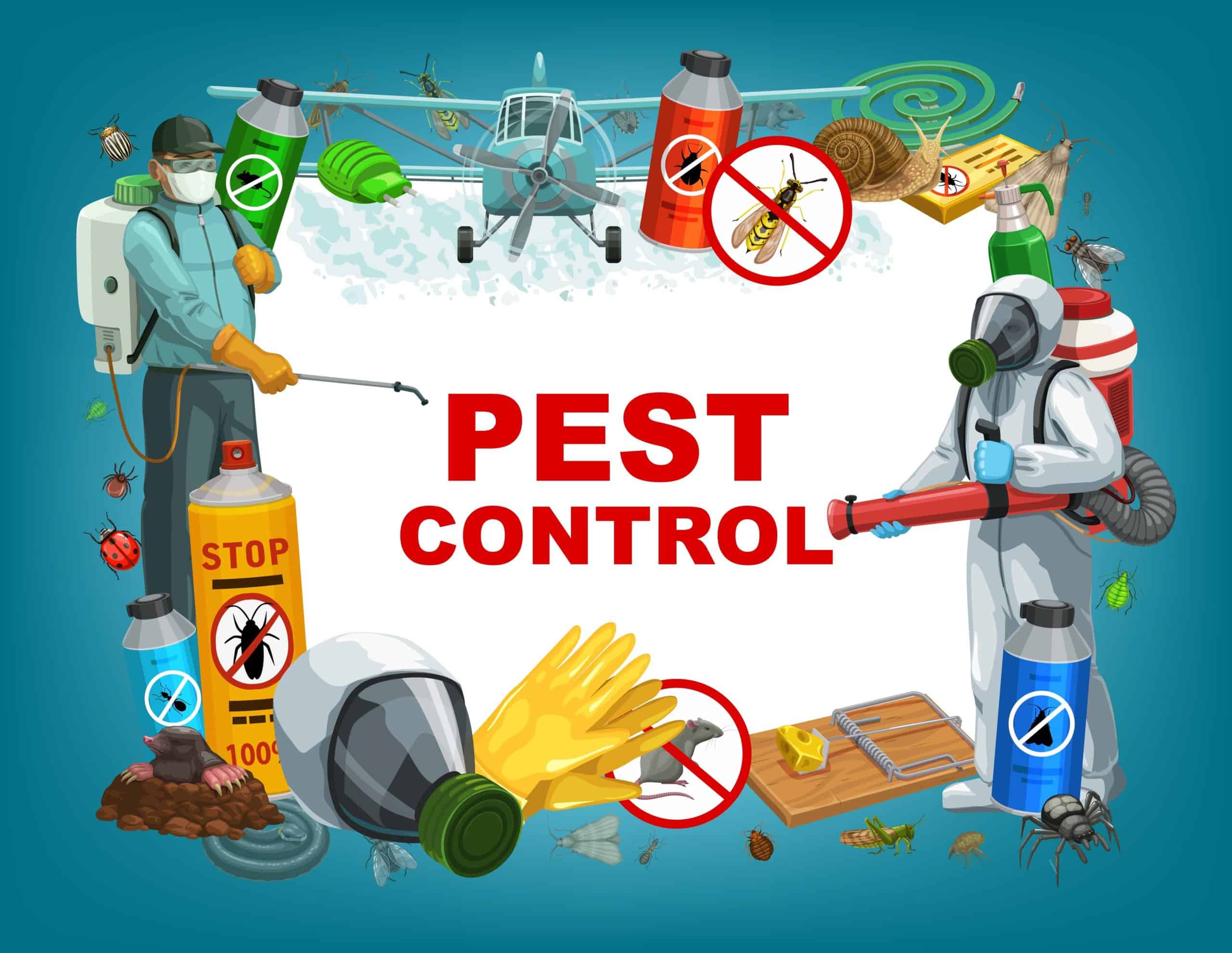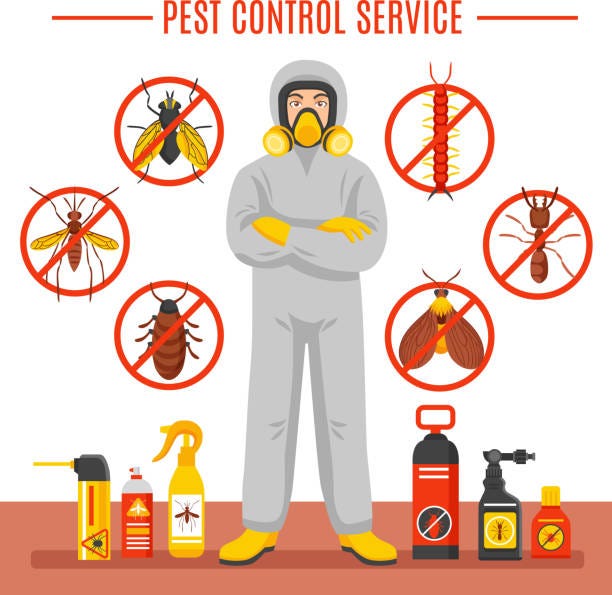A1 Bed Bugs Exterminator Portland - Rapid and Expert Solution
A1 Bed Bugs Exterminator Portland - Rapid and Expert Solution
Blog Article
Reliable Parasite Control Solutions: An Extensive Look at Elimination Techniques and Avoidance Procedures
In the world of insect control services, the effective management of problems calls for a meticulous approach that combines different strategies and steps for both obliteration and avoidance. From Integrated Parasite Administration (IPM) approaches that prioritize lasting services to chemical extermination techniques created for targeted elimination, the collection versus insects is huge and complex.

Integrated Pest Management (IPM) Methods
Integrated Parasite Management (IPM) Techniques include a detailed approach to pest control that concentrates on control, tracking, and avoidance approaches to efficiently manage insect populations. By incorporating various methods, IPM aims to lessen the impact of pests while also lowering the reliance on chemical pesticides. Avoidance lies at the core of IPM, stressing practices like correct cleanliness, upkeep of hygiene, and sealing entrance points to prevent pests from infesting buildings. Surveillance plays an essential duty in IPM by frequently examining and recognizing pest degrees to identify the suitable intervention thresholds. Control techniques in IPM focus on the use of physical, organic, and cultural techniques prior to transforming to chemical treatments as a last resource. These methods include presenting all-natural predators, environment modification, and using capturing devices to maintain parasite populations in check. In general, IPM cultivates a sustainable and eco mindful method to pest administration, advertising long-lasting services that secure both human wellness and the environment.
Chemical Extermination Strategies
Chemical extermination methods are typically used in parasite control services to successfully eliminate insect populations that posture a hazard to human health and wellness and home. These techniques involve using different chemical materials particularly designed to target and eliminate pests such as insects, rats, and various other undesirable animals. The application of chemicals, insecticides, rodenticides, and other chemical representatives is meticulously controlled to guarantee maximum performance while lessening threats to humans, family pets, and the setting.
One of the vital advantages of chemical elimination strategies is their capacity to supply fast and targeted results, making them particularly helpful in instances of severe infestations or urgent insect control requirements - a1 portland bed bug exterminator. Nevertheless, it is necessary to stress the value of proper handling, application, and disposal of these chemical items to protect against unintentional harm
Furthermore, integrated insect management (IPM) strategies usually integrate chemical elimination strategies with various other methods such as cleanliness, habitat alteration, and organic controls to develop a sustainable and thorough parasite control technique. By including chemical extermination strategies carefully within an IPM framework, insect control services can successfully handle pest populaces while minimizing prospective risks to human health and the atmosphere.
Biological Insect Control Approaches
Utilizing all-natural killers and bloodsuckers to manage bug populaces is a lasting technique called biological pest control. This approach harnesses the all-natural systems of the community to regulate pest populations without depending on synthetic chemicals. One common biological control technique includes introducing all-natural opponents of the target pest types, such as ladybugs for aphid control or nematodes for termite invasions. These all-natural killers prey on the parasites, helping to maintain their populations in check.
One more effective biological control approach is using microbial pesticides. These are normally occurring microbes, such as infections, fungis, and microorganisms, that especially target and infect specific parasite species. By making use of these microbial agents, parasite populations can be properly decreased without harming useful microorganisms or creating injury to the environment.
Physical Bug Prevention Actions
Carrying out physical parasite prevention procedures entails making use of obstacles and architectural alterations to deter parasites from infesting a home or getting in (a1 bed bugs exterminator portland). One effective approach is sealing all prospective entry points such as voids around doors, home windows, and useful link energy penetrations. Installing door moves, displays on windows, and securing cracks in the structure can help protect against bugs like bugs and rats from gaining accessibility inside your home. Additionally, preserving a clean and clutter-free atmosphere is essential as bugs are brought in to food resources and hiding places. Routinely evaluating and repairing any kind of damaged displays, vents, or roof covering tiles can likewise aid in keeping bugs out.
Another physical avoidance measure is the use of obstacles like fence to maintain bigger pests such as deer or raccoons away from the residential property. By carrying out these physical bug prevention steps, building proprietors can dramatically lower the danger of pest infestations and the damages they can create.
Expert Parasite Examination Procedures
Performing organized and thorough bug assessments is a fundamental aspect of specialist insect management procedures. Professional insect examiners are trained to carefully analyze residential properties for indications of problems, recognizing pest types, entrance points, and helpful problems. The inspection process normally starts with a comprehensive analysis of both the interior and exterior of the facilities. This involves monitoring for parasite droppings, chomp marks, nests, and any architectural damage that might indicate parasite activity. Furthermore, inspectors might make use of specialized devices such as wetness meters and borescopes to find concealed problems within walls or crawl areas.

Conclusion
In final thought, effective parasite control solutions utilize a range of methods, including Integrated Insect Management strategies, chemical elimination techniques, biological controls, and physical avoidance procedures. Specialist insect assessment treatments play an important function in identifying and addressing pest problems in a prompt way. By carrying out a combination of these strategies, homeowner can efficiently prevent and handle pest infestations.
From Integrated Insect Management (IPM) methods that prioritize lasting services to chemical elimination methods made for targeted elimination, the collection versus parasites is substantial and complex.Integrated Bug Management (IPM) Approaches encompass an extensive approach to pest control that concentrates on control, avoidance, and surveillance approaches to efficiently handle bug populaces.Chemical elimination methods are frequently utilized in parasite control services to efficiently eradicate parasite populaces that pose a hazard to human health and home.Employing natural killers and bloodsuckers to handle pest populations is a lasting technique known as organic bug control.In conclusion, reliable bug control services utilize a selection of methods, consisting of Integrated Parasite Monitoring methods, chemical extermination techniques, biological controls, and physical prevention actions.
Report this page